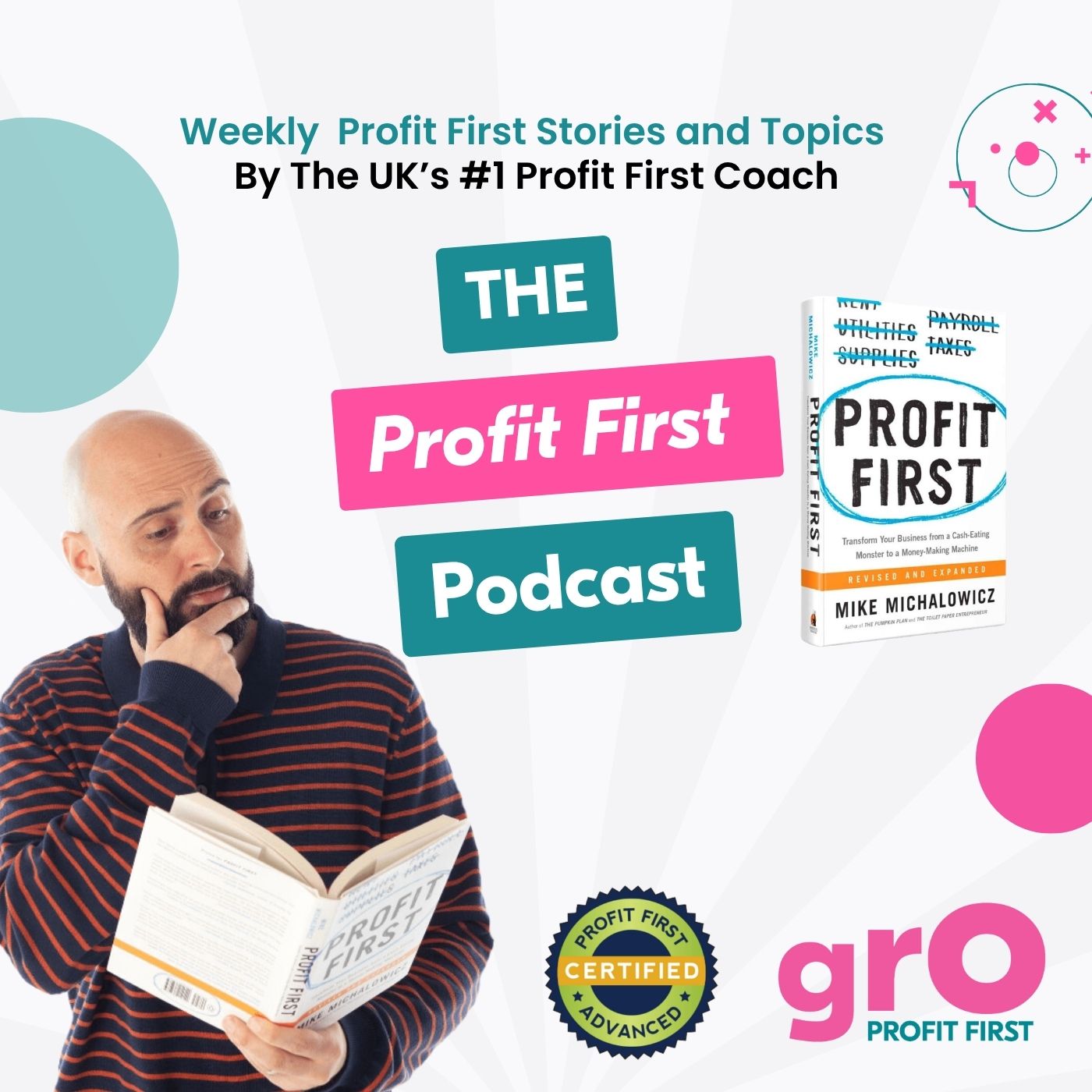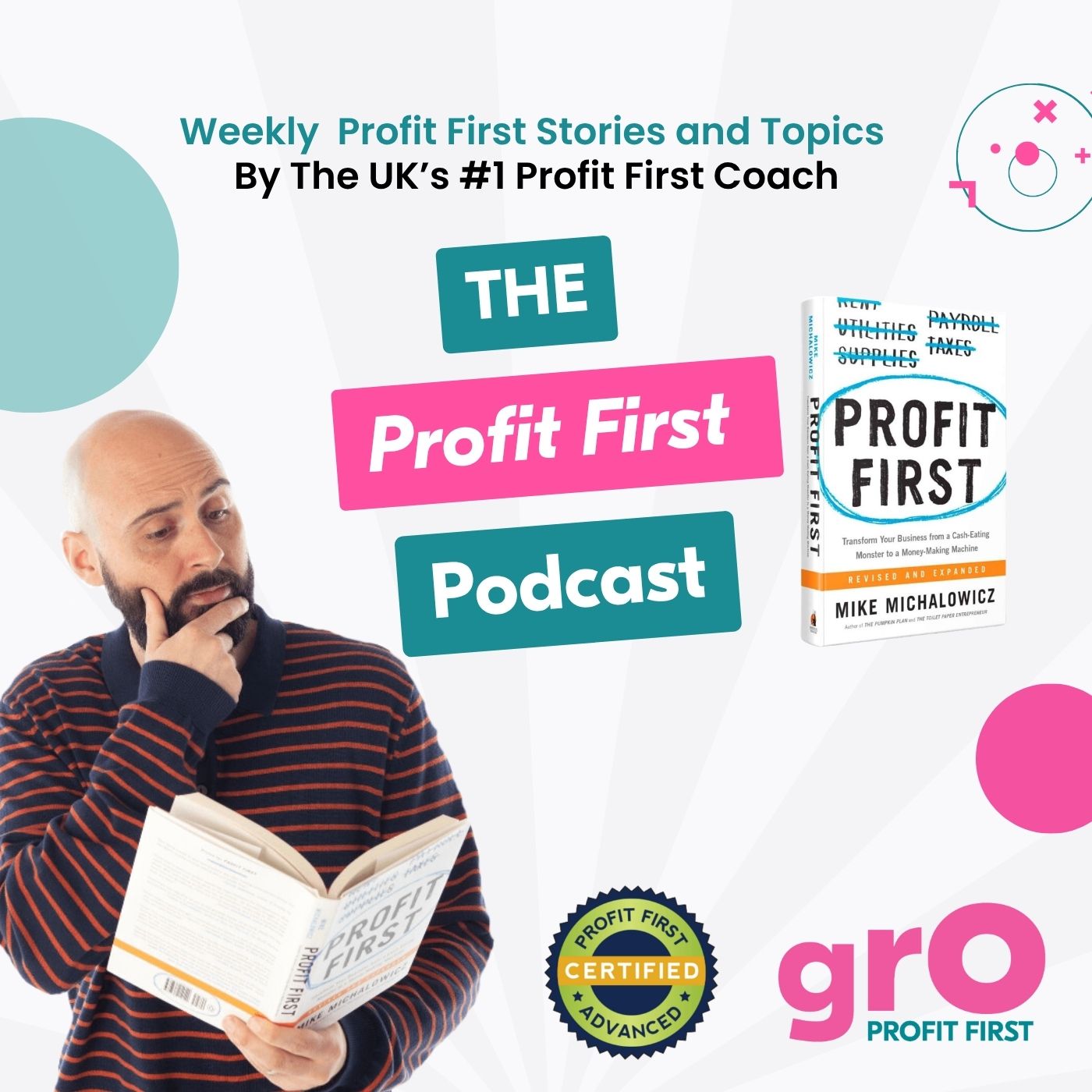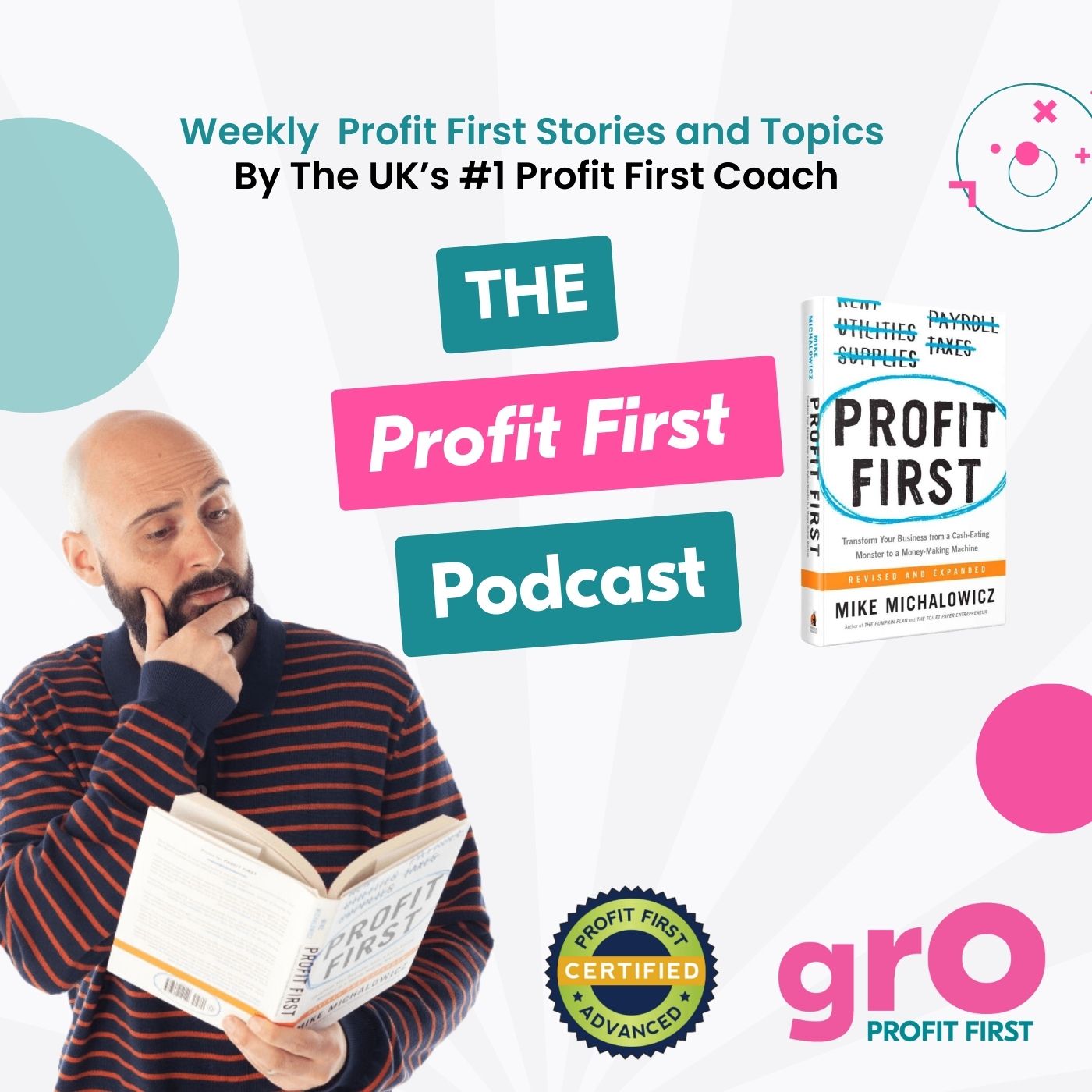Episode Transcript
[00:00:00] Hi guys. Steve Edwards from Grow Profit first accountant. So I want to share a success story with a client of ours. His name is Nathan. He's been with the business for several years. I think it's such an amazing story and you know, we've been privileged, I've been privileged personally to work with him, but the team's been working with him and you know that the progress his business has made in the last few years since he's embraced the product Profit first system is. It's just amazing and I want to share it and I want to say that first and foremost, everyone's got their own journey. It's unique to your circumstances. But what I find really interesting about Nathan's story is he genuinely felt like giving up in his business. And I think we've all been there in the past and he's in a completely different place now. I'm not saying he's got every single problem solved. I don't think as business owners we've got zero problems actually. The truth is that we pretty much get paid based off the problems we're solving and the solutions that we provide either in our own businesses or for other people and our customers. And that's how we get a share of the value. But I just want to walk you through if you're watching this on the screen. I've got an article here and I'll share it on the newsletter. We can sort of read it if you prefer. Prefer to look at the written version but just going to walk you through the, the journey. I'm not going to read it kind of like for like exactly in the article. I'll share it in my, my kind of, kind of own words. So Nathan was already with us for probably two, three years at this stage. He had some challenges with sort of cash flow, business growth. We're pretty much talking just coming out of COVID know, we are really talking post Covid and I'm sure a lot of people have had problems and challenges since then and the truth is we don't have all the answers as business owners. However, we feel we should have all the answers when we start. The problem with not being around like minded people is we don't learn that they're going through the same challenges or if they've, if they're not going through the same challenges now they've been through the challenge and they've, they've come through the other end, they found the solution. Maybe they're going through other challenges now and there could be things, you know, different challenges, you can share with each other. But the point I'm making is when you're not in a group of other business owners is why I talk a lot about a mastermind and, and things like that is it can be quite lonely, isolated, and you second guess yourself, you question yourself. And Nathan was in that situation. He basically felt like kind of packing it all in. And he, and he said, you know what, I'm, I'm, you know, I'm close to packing it all in. And he was speaking to my payroll manager colleague of mine, Barbara. If any of you are clients of grow, formerly cta, then you would have come across Barbara. She does the payroll, the CIS for a lot of our clients. And Bob had a chat with Nathan and said, you need to speak to Steve about Profit First. And I appreciate a lot of you watching or listening to this or reading. You've, you, you've probably got awareness around Profit first and well, it is. Nathan never heard of it. He had no idea what it was. Bob said, it's a system that helps you manage your finances. She didn't really say much more than that, but Steve's been working with people. It makes a difference. You need to have a chat with him. And I remember it was kind of winter, winter's time. It was quite dark. I was at home, I was on the phone speaking to Nathan and I said, look, I'm using this system myself. I'm working with a handful of people at the moment. We've been getting good results. Do you want to be one of those handful of people I'm working with personally? And Nathan said, let's just give it a go. I'm willing to give anything a go because I need, I've done it my way and you know, maybe I should try it someone else's way. And just on that note, there's more than one way of being successful. You've got to find a way that works for you. And Nathan was referring more to the finance side of the business. You know, there's really four main things in the business. There's hr, there's finance, there's marketing, and there's operations. Not enough people put focus on the finance foundations, we call it in their business. They're too much focused on the other stuff, you know, maybe kind of busy on the tools, doing operations, but when it comes to the finances, he said, look, let's try it your way.
[00:04:28] So yeah, I explained what Profit first was about and in case you're hearing it for the first time, it's about making profit center stage. So what comes first matters. Instead of sales minus expenses equals profit. Instead of putting profit last, it's going to be sales minus profit equals expenses. And you might be, your head might be thinking, what the. How, how does that make any sense?
[00:04:53] So essentially, let's pretend we've got a 300k business. Instead of having 270ks worth of expenses and being left with 10%, which is 30k, we say, right, what should we be earning? What sort of benchmark should we be aiming for? If we're a, a kind of top 20% business, if we're innovative, if we're top quality, we're premium, we're doing all the right stuff, what should we be aiming for? It might be we're looking for 100k plus something along those lines. So actually, 300k minus 100k gives us 200,000 pound left to run our business. And what it does is, is it forces you to change, it forces you to innovate, it forces you to think different. So we're not going to get there overnight, but we kind of put your business on the scales. We've done it with Nathan's, put them on the scales and said, this is where your percentages are at the moment, this is where we want to get to. He said, let's, let's give it a go, let's, let's crack on. I'm just going to put my faith and put my trust, trust in you. So the first thing we did with Nathan was we create what we call a rollout plan. So you, if you've read the book, you might be familiar with what they call an instant profit assessment. An instant assessment is a really quick kind of, what's my turnover, what's my profit? You know, looking at last year's accounts, what percentages should I be aiming for? However, there's lots of factors to take into account that doesn't take into account your loans, doesn't take into account any commitments to hmrc, it doesn't always take into account your personal drawings, doesn't take it into how much money you've put in the business. An instant assessment is like a 15 minute exercise. A profit assessment or a rollout plan, we call it, is a deep dive into your finances. What's really going on? Every business has got a story. What's the owner been paying themselves on average every week? You know, what, what loans are we paying, what finance are we catching up on? Whether it's for that equipment, whether it's for that van, that hire purchase, am I behind with HMRC or paye? Do I, do I have enough tax set aside in a separate pot? We analyze all these things the last two years, we look at the industry, so we think of what's normal in your industry. We don't want to be average, but we do take that into account and we create a custom plan for your business. And that's what we've done with Nathan. So we said, right, you're here now, long term, we want to be, you know, making this sort of number. But here's a 12 month plan. I compare it to going to the gym, getting into shape. You know, anybody can go to the gym, but are you doing the right workout plan? Have you got the right nutrition plan? Are you eating the right things? Who's going to keep you accountable? Who's going to make sure you're going to the gym two, three, four times a week or whatever you should be going? So essentially we're like personal trainers and we gave Nathan the profit plan. So we gave him a profit plan for 12 months, 12 to 18 months. And he knew what we're aiming for quarter by quarter. So he knows exactly for every thousand pound that goes into his bank account, how much he needs to set aside for vat, how much he needs to set aside for materials, and, and it took some kind of fine tuning.
[00:07:53] You don't get to these numbers straight away instantly. It actually took us probably a couple of months to really nail his materials, his cost of sales, because it was quite complicated and every business is probably slightly different.
[00:08:07] But we got there and we got a weekly spreadsheet. So Nathan looks into his bank account, he has a look what's gone in. So let's say it's £5,000 puts into the spreadsheet and it tells him exactly what to set aside. And then we had a, a plan for the percentages for each quarter. So for argument's sake, I'm not going to give you the real numbers. So let's pretend Nathan was paying himself 10 of whatever hits his bank in the first quarter. That might go up to 12 in quarter two. It might go to 14 in quarter three. With profit first. We're looking for progress, not perfection. And that's what we did with Nathan. So when we look at the numbers as they are, so in your business, in terms of what's already going on, we call that the caps. The CAPS stands for the current allocated percentages. That's what's already happening in your business. The taps is the target allocated percentages. So if you're currently paying yourself 10% as a salary from your business. That's not profit, by the way. Profit is a separate pot of money. There's like a bonus. You can reward yourself every three months. We're coming to the end of March and it's going to be happy profit distribution day. For our profit first clients, it's this extra chunk of money. But the owner's pay is what you pay yourself as an employee in your business. So if it's 10% at the beginning, maybe the target, the tap, the target allocated percentage is 20%. And then we create a roadmap to get from here to here. As I said, you got to be consistent. Doesn't happen overnight. And I've got a fast forward napal. Nathan tripled his profit within, I think it's around two years. So within two years, Nathan tripled his profit. Not only did he triple his profit, he's managed to spend less time working in the business. He's hired a key team member who's essentially kind of like a field manager, head, head of operations in many ways, because most of you running a business, you're, you're not just the owner, you're probably the most important employee. So Nathan's managed to transition to become more of an owner, not just an employee in his business, while tripling his profit. As I said, not everything's all you know, he's not got every single problem solved. There's still going to be challenges, but these are real numbers he's achieved in two years using the profit first system. So if you want to know where to start in your business, then the starting point is to understand your caps. What's your current allocated percentages? If you kind of want a rough and ready number, you can do an instant profit assessment. Just pop me a message and I'll send you the information. How to do an instant assessment. We are about to do a training course to show you exactly how to do your own profit assessment. And that's a deeper dive. So if you're currently implementing profit first at the moment, something's better than nothing. I say to people, if you're unsure what to do, even if you put 1% aside into a profit pot, even if you just start separating your VAT money, even if you just start separating your tax, that's better than nothing. But what you really want to do is understand your caps, which is your current allocated percentages.
[00:11:21] If you found that useful and you want to know how to kind of do your own assessment, just drop me a message and maybe we can do that. In a future video. Thanks, guys. Cheers.


